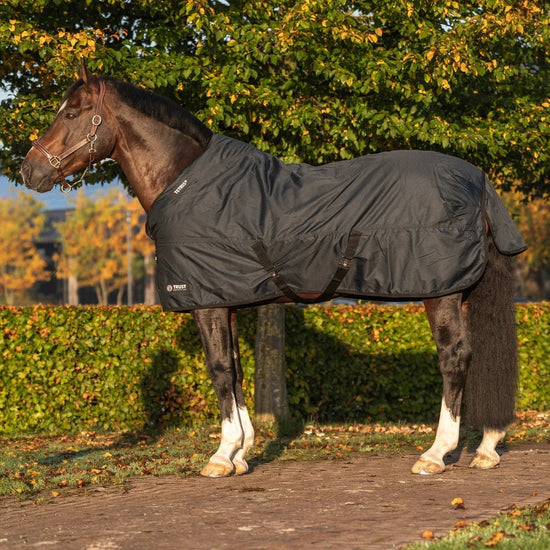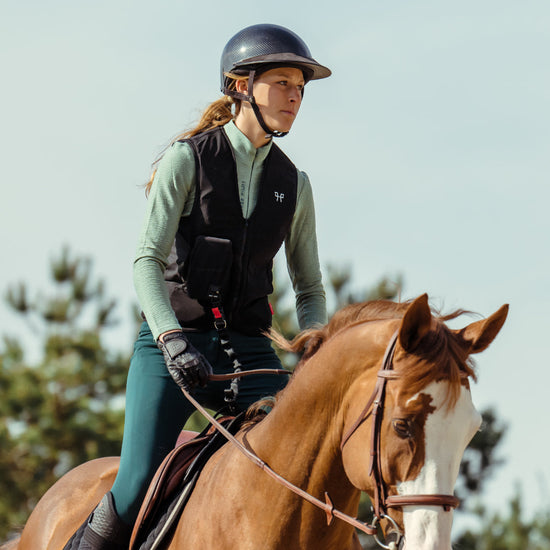The new meadow season is right around the corner and therefore the question on how we can prepare our horse for the new feeding situation, so we avoid colics and sicknesses due to yummy fresh grass.
The digestion of horses is a very delicate topic. Sudden changes in feeding are not planned in the horses nature and actually cause issues in modern grass-mono cultures. In spring most horses experience a sudden change of their meal plan as fresh, young grass is suddenly available and most horses do not have the luxus of a grass rich winter meadow which allows a soft transition to spring grass.
Even though the risks are known, a lot of stables have the deadline 1st of May when the horses change from hay and haylage to grass. Sometimes very radically, like from 0 to 100 without getting used to it first. How dangerous these sudden changes can be is clearly shown by the season typical sicknesses like diarrhea and feaces water, colics, mypatias (muscle sicknesses) and of course - the major one - laminitis.
During winter, the intestines got used to a diet with lots of roughage. The intestinal flora is balanced and consists out of bacteria which are specialized in digesting the winterfeed. If the horse is suddenly given large amounts of green feed in the form of spring-fresh pasture grass, this balance is thrown out of balance and part of the food cannot be processed properly. In particular, if instead of meadows rich in variety, only lush pasture areas with few herbs that are suitable for dairy and beef cattle are available to the horses, this rapid changeover can make many horses sick.

Why does a wrong field preperation cause sickness?
The fresh grass contains a huge amount of carbohydrates in forms of long chains of sugar molecules - also called fructanes. These carbohydrates need to be digested in the horse's small intestines as they can only be processed by enzymatic processes, which are happening in the small intestines. Does the horse now face a sudden big amount of fructane, it is not possible to process them as the intestines flora is not used to it. The fructane just goes through to the big intestines where we face a completely different digestion structure.
The bacteria that break down cellulose are displaced by lactic acid bacteria, which can multiply in an optimal and rapid manner in the environment of the insufficiently digested carbohydrates. Cellulose-digesting bacteria perish at the same time. Their decay products, so-called endotoxins, get into the bloodstream and can cause inflammation and many other reactions in the horse's body. The metabolic products of the unwanted bacteria do the rest. In the end, there may be more or less severe intestinal inflammation, but also dangerous hoof attacks in endangered animals, especially if they already suffer from metabolic diseases.
In such a lush May pasture, a horse can eat up to six kilos of grass within an hour! It doesn't even matter how big the horse is, or whether it is a pony or a large horse. Ponies also eat these quantities, the lower mouth volume is compensated by the increased chewing blows. Only very large horses such as Percherons deviate from this set - but not down, but up. Skillful management measures adapted to the horse type can counteract this.

The correct grazing preperation - but how?
- Feed the horse full with hay - not with pellets!
- Increase the time on the field slowly and controlled - start with 15 to 20 minutes and slowly increase the time by 10 - 15 minutes a day over 3 - 4 weeks
- In case of beginning diahrrea do not increase the time out but increase the amount of hay
- Adapt the time on the field during the main growth phase of the grass (June-July) related to the type of horse (does not apply for lactating mares and their foals)
- Avoid food abstinence for more than 5 hours (outside of pasture time)
- On cold nights and sunny days, leave endangered horses in the sand paddock (high fructan concentration in the grass! Or only let them out for a short time. Sensitive animals should be carefully re-grazed after such interruptions!)
- Adapt the daily portion of pellets (or other mineral feed)
And last but not least: Always remember enough movement and roughage. Every hour, your horse is trained it burns the additional calories that come automatically with fresh spring grass. Further it stops eating the fresh grass and allows time for the intestine bacteria to get used to the new feed. After training, a good amount of hay is important too. A normal sized warmblood horse needs roughly 10% of its body weight in dry matter roughage. That calculates to approx. 12kg of hay for a 600kg horse a day. Remembering this and our little check list and we can be sure we did everything to avoid any spring grass related issues.
And if you have a horse that eats his hay way too fast and you are afraid the feeding break might be very long, for example over night, a slow feeder can be found here.
Hopefully our little guide helps you this spring and if you have any more questions, feel free to comment or contact us.




